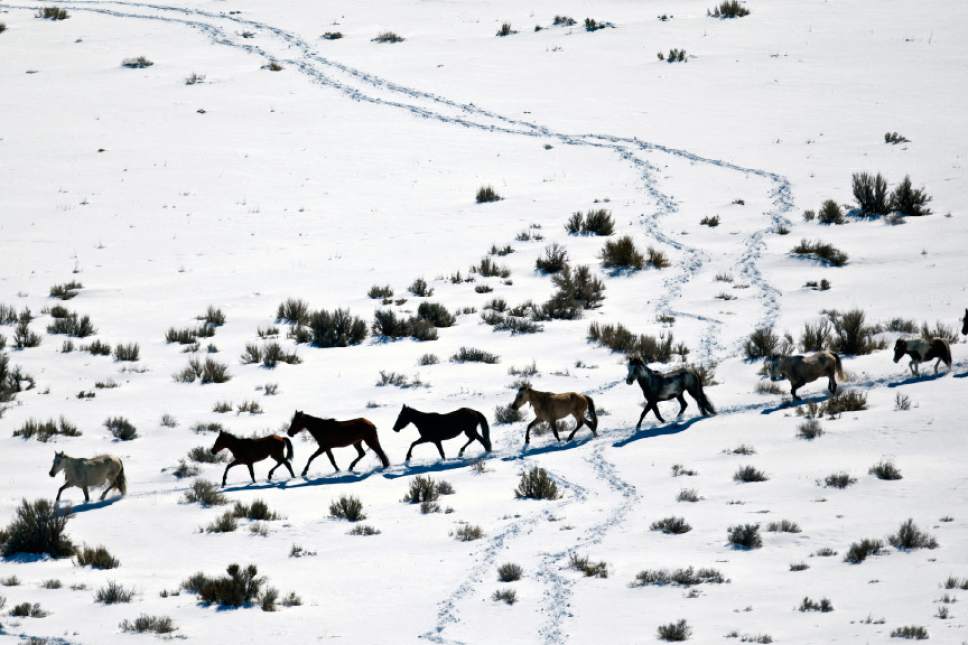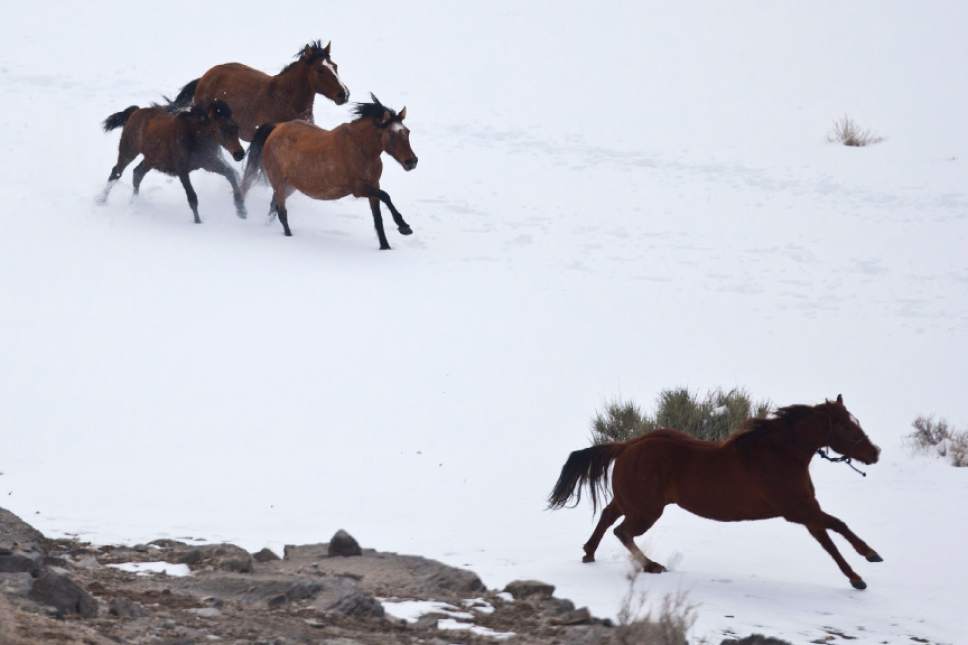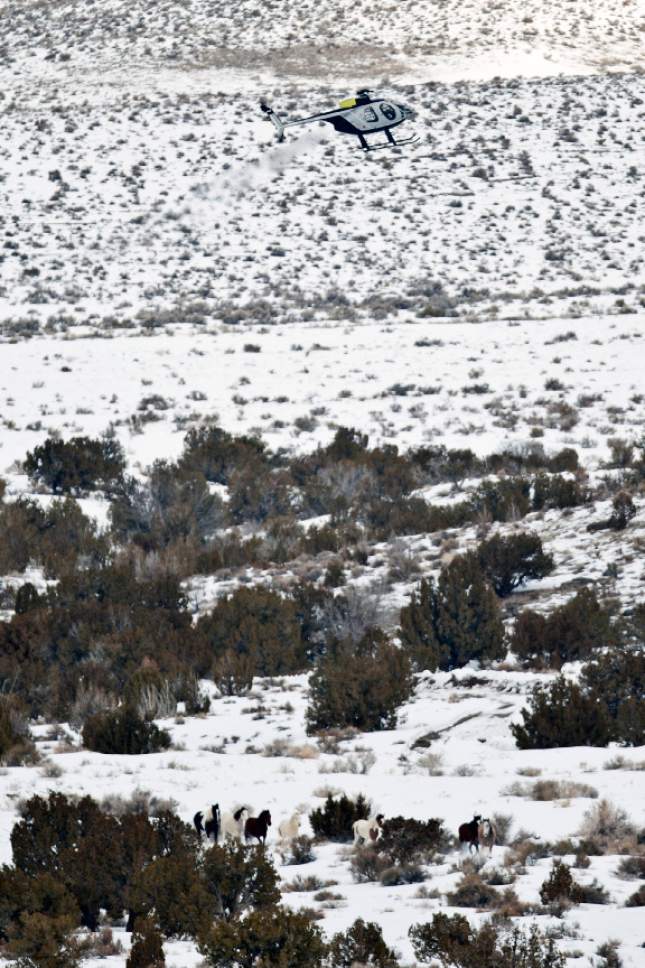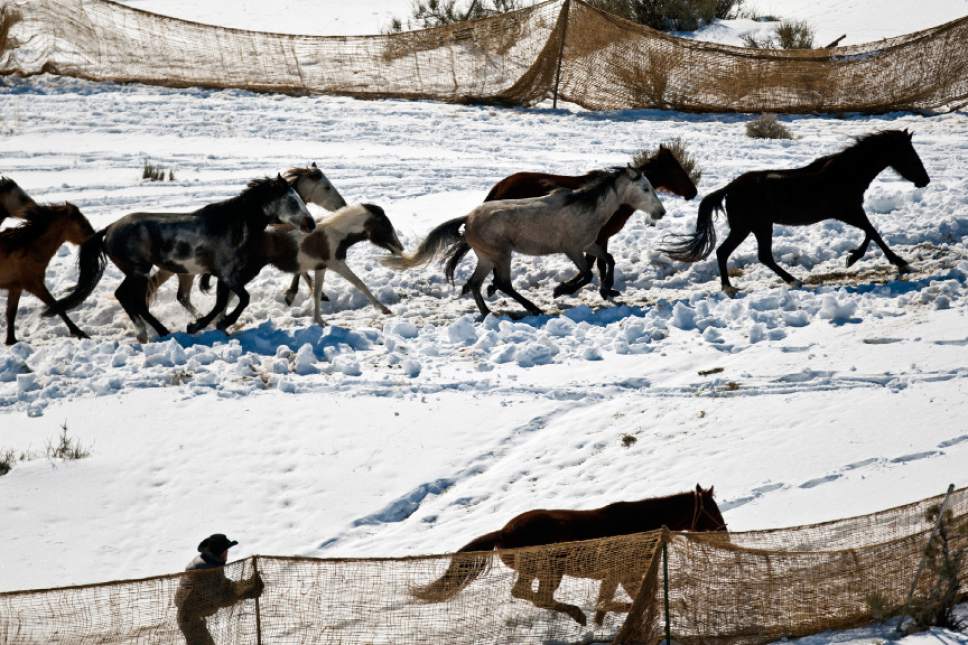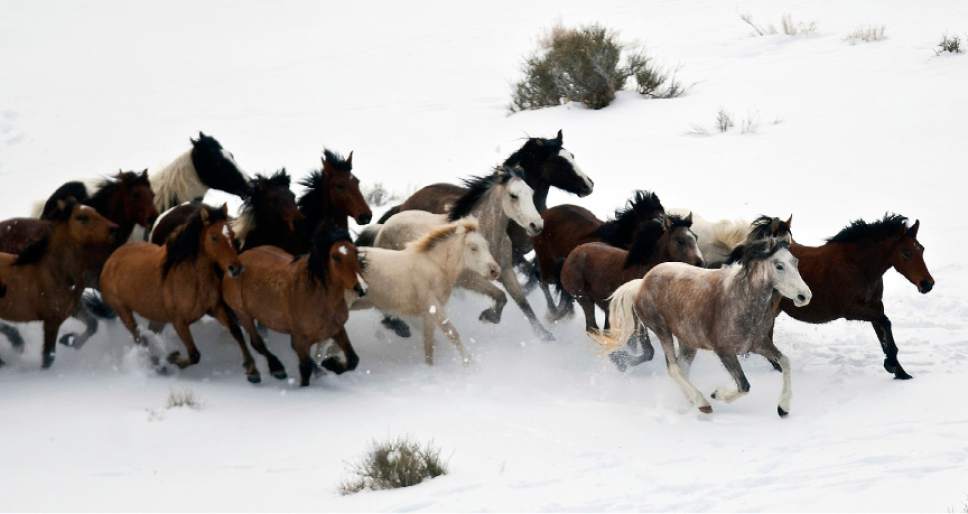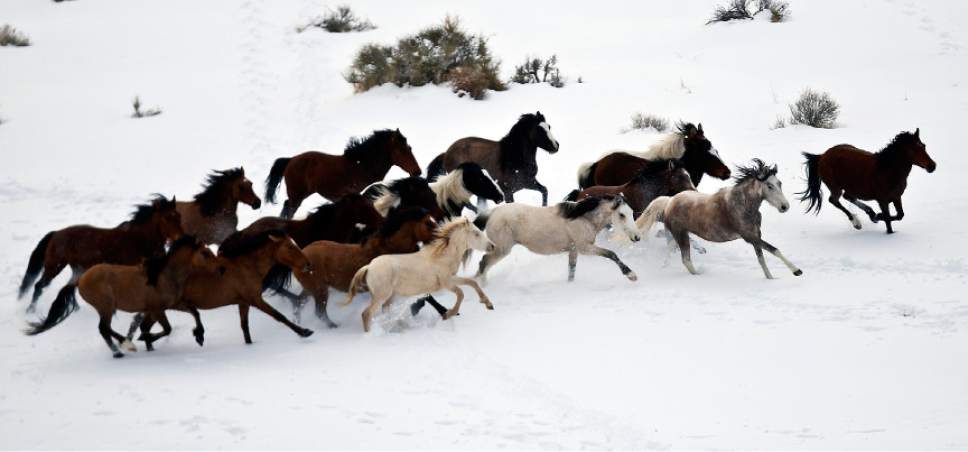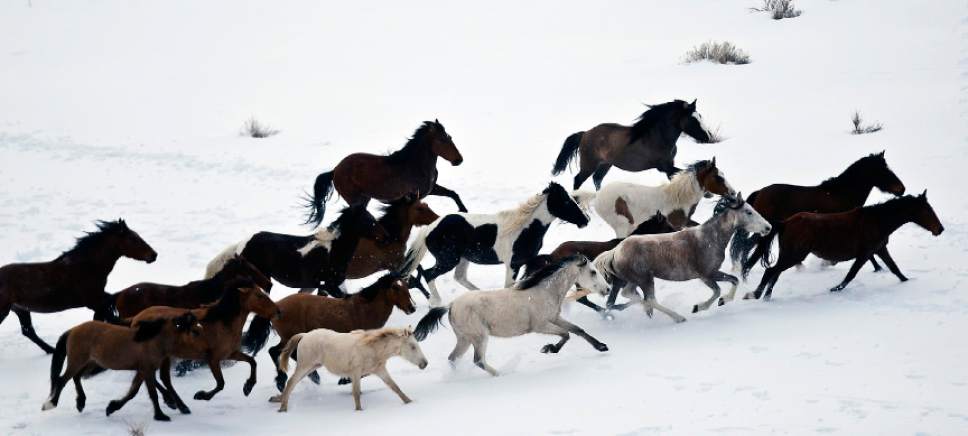This is an archived article that was published on sltrib.com in 2017, and information in the article may be outdated. It is provided only for personal research purposes and may not be reprinted.
Federal land managers are embarking on the busiest wild horse roundup season in years for Utah.
Helicopter-assisted wranglers will gather around 1,500 horses this winter from three herds in the West Desert, starting with the 150 roaming the Frisco Herd Management Area outside Milford. This roundup, which began Saturday, is part of a research project in which 100 horses will be fitted with GPS tracking devices and returned to the range.
For years, federally protected wild horses have irked rural county commissioners and ranchers who say the Bureau of Land Management is failing to keep horse populations within appropriate levels, displacing cattle and damaging the range in the process.
And yet the agency is spending millions of dollars warehousing 45,000 horses for life — a practice that the National Academy of Sciences has called "expensive and unproductive."
BLM officials acknowledge that the current system is unsustainable, but Congress has given them conflicting mandates. An advisory panel suggested killing captive horses last year, but the public quickly shouted down that idea, which the BLM vowed was not an option.
Fertility control is now taking center stage at this year's Utah gathers.
—
Evolving management • Free-roaming horses in Utah, Nevada, Wyoming and other western states are descended from domesticated horses turned loose by Spanish explorers and pioneers. Some are feral runaways. They have become icons of the Western spirit, and many Americans are disturbed at the specter of land managers herding them into corrals while taxpayers subsidize cattle grazing on public lands.
Horse advocates say removing the animals spurs reproductive rates among those that remain on the range. Suzanne Roy, executive director of the American Wild Horse Preservation Council, decries the BLM's roundups as contrary to scientific recommendations and public opinion.
"Meanwhile, the agency continues to underutilize humane birth control as an alternative to cruel and costly roundups," she said.
All three of Utah's roundups this winter, however, entail treating mares with fertility vaccines and returning them to the range with an equal number of unsterilized males.
"The program itself is changing, it's evolving. We are coming up with better tools for managing the horses," said Lisa Reid, spokeswoman for the BLM's West Desert district and the agency's horse program.
The Frisco horses will be taken to the BLM's contract corral at Axtell, where they will mix with 113 Frisco horses gathered in July 2015. A U.S. Geological Survey research team will select 50 mares and 50 studs that will be sent back to their home range, 15 miles northwest of Milford.
The mares will get a fertility vaccine and will be fitted with a radio collar that records their movements. GPS units will be braided into the studs' tails because collars are likely to get chewed off the males as they compete for dominance.
The researchers will select animals that represent a diversity of ages. Those not returned to the wild will be available for adoption.
—
An end to warehousing? • None of the Frisco males selected for the research will be sterilized. Gelding is common for captive males, but is controversial when administered to horses that are returned to the range. Horse advocates argue it is inhumane and ineffective at checking population growth because ungelded studs can impregnate numerous mares.
However, the BLM has authorized the experimental gelding of studs that will be gathered from the Conger herd in Millard County. That roundup has yet to be scheduled. Researchers will record and compare data from Conger and Frisco herds over the next four years.
Later this winter, BLM will pull 700 horses each from the Sulphur herd area west of Milford and the Cedar Mountain herd area in Tooele County, according to Reid. Birth control will be administered to 200 mares from each area, which will be turned loose with 200 males. The drug porcine zona pellucida vaccine, or PZP, stimulates the mare's immune system to block conception.
The herds will be monitored to assess the efficacy of the fertility treatments.
Also in Millard County, the agency's contract wranglers will round up 150 horses from the Muddy Creek and Bible Springs herds in August to fulfill obligations from a court order.
Horse roundup numbers vary depending on funding, range conditions and myriad other factors. The year 2000, when drought had severely depleted the range of forage, was probably the most active gather year in Utah, according to Reid, who recalls that 2,500 horses were removed.
"Our ultimate goal is we don't remove any more horses than our adoption program can handle. We hope in 10 years that by utilizing birth control we can reach appropriate management levels," Reid said.
Brian Maffly covers public lands for The Salt Lake Tribune. Brian Maffly can be reached at bmaffly@sltrib.com or 801-257-8713.
Twitter: @brianmaffly —
Public invited
I Wild-horse roundups are open to the public, but observers must meet Bureau of Land Management staffers early in the morning, follow them to gather locations in their own transportation and confine their movements to a designated area to avoid disturbing the horses as they are guided into pens and trucks. Check the BLM's website, blm.gov, for further information.




